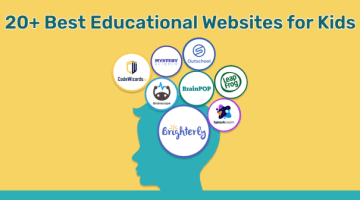What Math Do 7th Graders Learn? Concepts & Skills
reviewed by Camille Ira B. Mendoza
Updated on October 23, 2024
Your child’s 6th grade was quite challenging, right? For many, tackling those ratios and arithmetic operations required much attention. But now, as they move into 7th class, you both will deal with more challenging topics.
In this article, you’ll discover what kind of math your child will learn in 7th grade. Let’s dive in together!
What will your child learn in 7th-grade math?
In 7th-grade math, kids learn to understand proportional relationships and operations with rational numbers, work with expressional and linear equations, and solve problems that involve scale drawing and geometric constructions. Considering this vast range of topics, your child surely needs in-depth knowledge (read: understanding) of the math concepts in 7th grade.
Math Program for 7th grade
The math program for 7th grade, also known as “Common Core State Standards for Mathematics (CCSSM) for Grade 7,” summarizes those key areas for middle school students:
- Ratios and proportional relationships: Students should comprehend ratios and proportions and solve problems with proportional relationships.
- Expressions, equations, and inequalities: Students should know how to estimate expressions, solve equations and inequalities, and draw the solutions on a number line.
- Geometry: Students should comprehend geometric shapes and their. They need to understand how to find the area, surface area, and volume of different shapes.
- Statistics and probability: Students in 7 grade should know the basics of statistics and how to collect, organize, and analyze data. That way, they can calculate the probability of different life events.
We at Brighterly use Common Core math standards to create a customized online 7th-grade math syllabus for your child. Our educational approach focuses on a deep understanding of the underlying concepts to ensure that your kid has a deep knowledge of each math aspect that they’ve learned. At the same time, we make each study session fun and entertaining to show your child that math is interesting, not a scary subject.
10 main capabilities schoolers gain after the 7th-grade
- Being able to mentally estimate percentages;
- Solving multi-step algebraic equations;
- Knowing and applying simple algebraic formulas;
- Learning to use measurements appropriately;
- Working with volumes;
- Being able to identify, name, and measure various geometric shapes;
- Understanding different types of graphs, charts, and metrics;
- Collecting data, analyzing it, and being able to extract patterns and trends;
- Understanding the role of statistics and working with statistical data;
- Learning to predict the outcomes based on the provided information.
To clarify what schoolers learn in seventh-grade math, let’s imagine this year as a bridge between some algebra and geometry basics and more advanced topics students are yet to study. The point is that the 7th grade is crucial because it prepares a solid ground for high school.
Luckily, many platforms offer tailored tutoring courses as online math 7th grade becomes a new convenient norm.
With platforms like Brighterly, the child’s studying transforms from blind memorizing to conscious understanding. Now, it’s about knowing why this topic is important and how to apply it in the future. Plus, the 1:1 learning format is quite convenient, too. It guarantees maximum attention is devoted to the needs of your child.
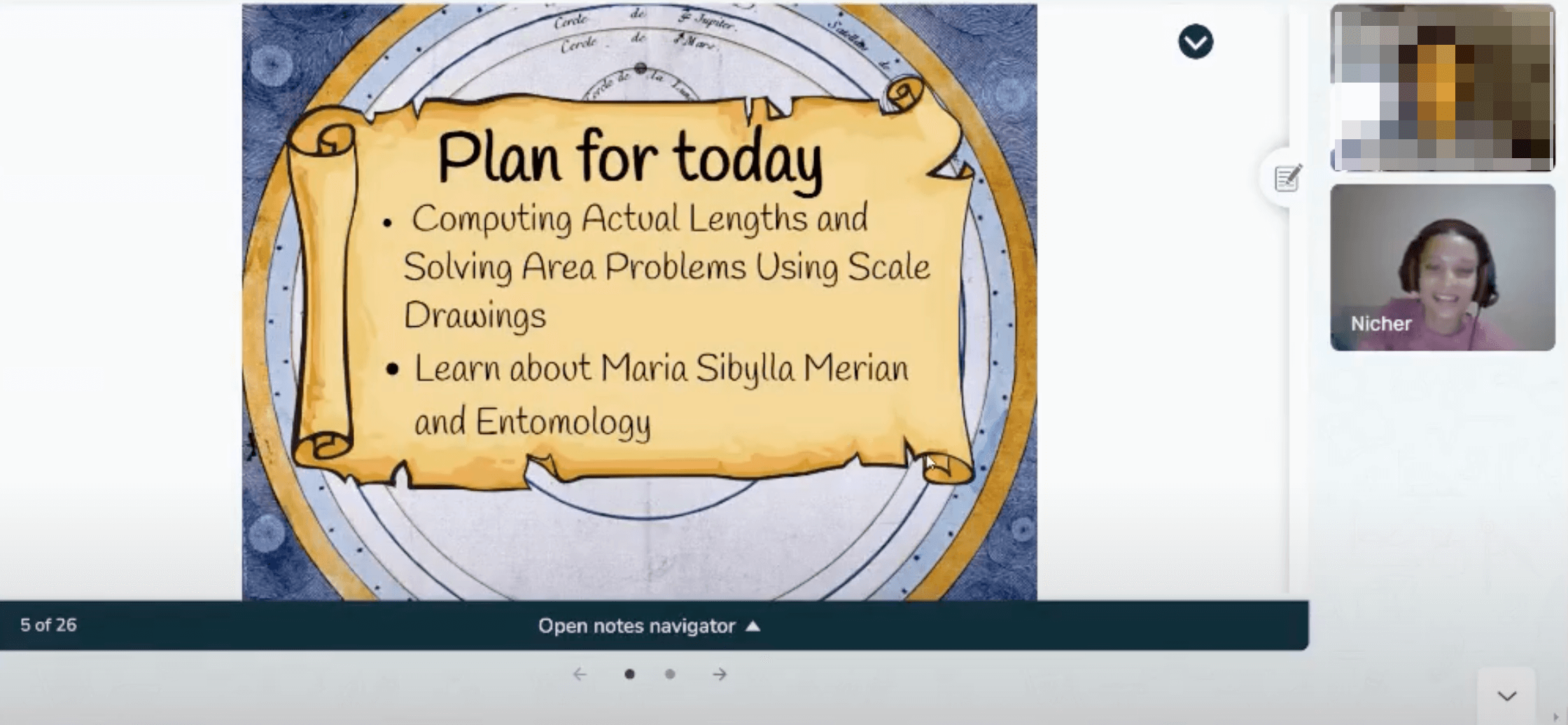
Now, it’s about knowing why this topic is important and how to apply it in the future. Also, the 1:1 learning format proves its convenience for tutoring sessions with teenagers. It guarantees maximum attention is devoted to the needs of your child.
What type of math do children learn in 7th grade?
In the 7th grade, children learn the concepts of integers, percentages, exponents, decimals, fractions, and root radicals. The classes start involving more analytical, complex, and engaging math branches like algebra and geometry.
Plus, children get acquainted with number systems with a deep dive into rational and irrational numbers. Additionally, they expand their knowledge of ratio and proportions — the topics they typically first learn during the 6th grade.
What math is taught in 7th grade
While answering what math is taught in 7th grade, it’s worth mentioning several key topics.
What math do 7th graders learn: Numbers
7th-grade math skills include the knowledge of rational numbers. After finishing the course, students can add, subtract, divide, and multiply decimals and fractions.
They clearly understand what percentages are and how to represent them. Furthermore, they can use positive and negative numbers and make arithmetic operations. Finally, they grasp the basic knowledge of exponents and how they work.
What math do 7th graders learn: Algebra
Algebra in 7th grade is relatively easy since a child only gets acquainted with it. During this year, they learn to work with expressions and equations. They also first use variables to solve multi-step equations. Finally, it’s when children learn to apply basic formulas — the skill they’ll use in their future math studies.
What math do 7th graders learn: Geometry
Seventh-grade math covers geometry more deeply than before, unlocking more advanced geometric vocabulary with complex shapes. More specifically, they cover the basic properties of different shapes, learn to calculate their areas and perimeters, and discover the concepts of volume and surface area.
What math do 7th graders learn: Data Analysis
If you’ve ever wondered what math 7th graders learn, the clue is that now they are encouraged to analyze the data they work with. For instance, they are taught to interpret data presented in tables, graphs, or charts. This way, students learn to make informed decisions based on the information provided.
What math do 7th graders learn: Probability
The basic 7th-grade math concepts also include probability. While exploring this math brunch, kids adopt the importance of statistics in making decisions. They analyze large data sets to ensure their choices are constructive and rely primarily on available data. As a result, they discover the basic rules of probability and try to clarify how these influence the outcomes in games of chance and sports betting.
What math do 7th graders learn: Measurements
Among other skills your child should learn in 7th-grade math is mastering and using various measurements. So, at the end of the course, students can use various measurement terms to describe diverse real-world objects. Additionally, the topic involves using formulas to calculate the areas for triangles, trapezoids, parallelograms, and other shapes.
How do you master 7th-grade math skills?
Your child can easily master 7th-grade math skills by regularly revising old material and closing knowledge gaps. The easiest way to achieve this is to combine regular self-practices with tutoring sessions, where the experienced teacher selects the best ways to gain knowledge.
Online tutoring at platforms like Brighterly is the perfect solution for mastering 7th-grade math skills. With tailored 1:1 sessions, a certified tutor has enough time to reveal your child’s specific needs, talents, and potential challenges they may face.
With this careful approach and stress-free online environment, you can be sure that your kid will succeed in their 7th-grade math endeavors. We will show your kid how to use math in various daily situations, from grocery shopping to constructing complex objects.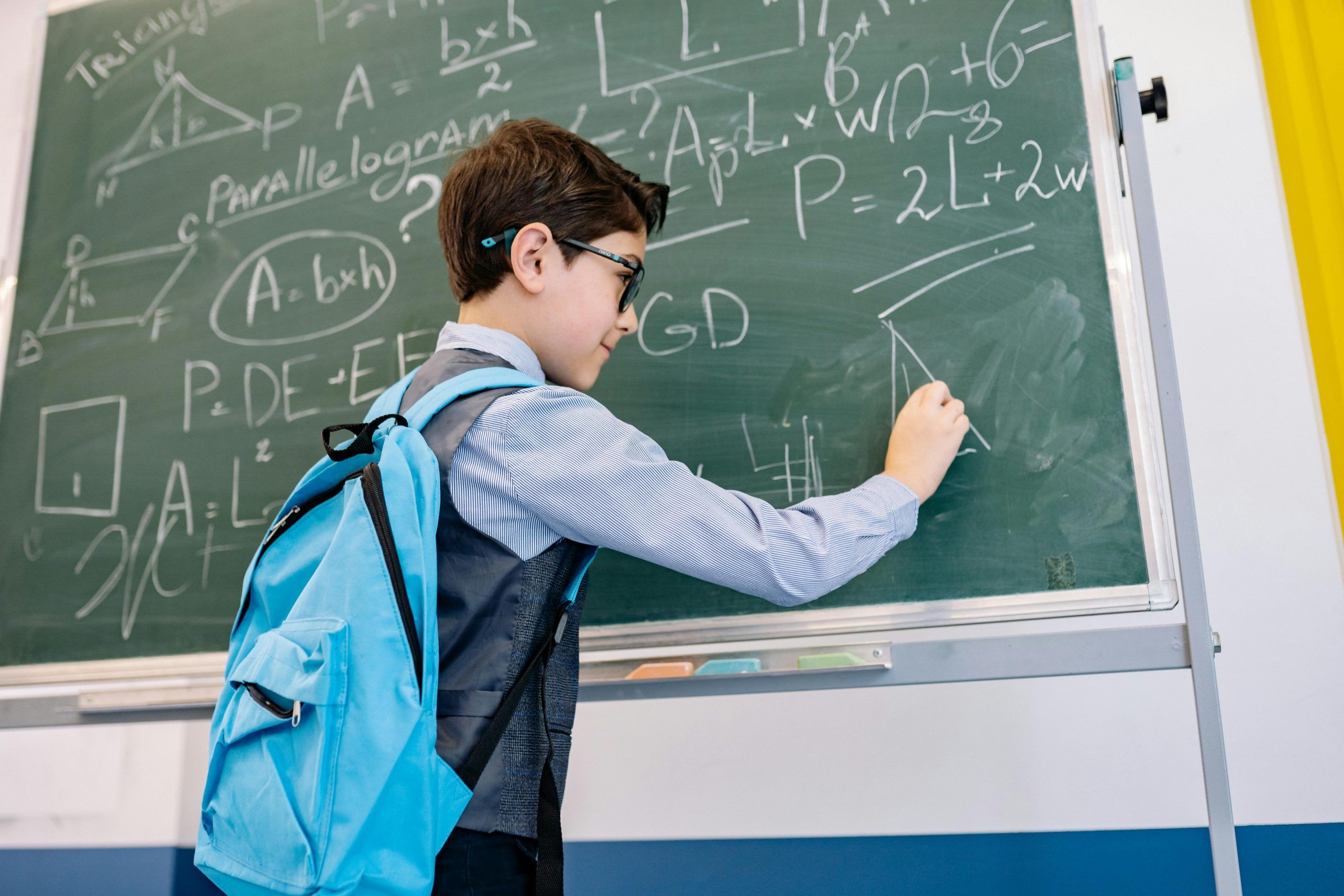
7 exercises for better 7th grade math skills
- When you’re in a store or a cafe, encourage your child to mentally calculate percentages of taxes, tips, or prices.
- Teach your child to use negative and positive numbers when discussing temperature, wins or losses, and positive or negative changes.
- Encourage your children to examine graphs or tables together with you. Make sure they understand how to use and extract this consolidated data.
- Use appropriate geometric wordings when discussing objects. For instance, ensure your child understands the geometrical 7th-grade math concepts.
First, teach them to distinguish between shapes by discussing simple concepts like a rectangular picture, triangular sandwich, or cylinder-shaped cola can.
When they grasp that, include more complex geometric notions, like complementary or supplementary angles for describing sun shades.
- If it’s tough for your child to memorize all that math vocabulary, use the well-known card tactics. Write down those concepts and hang them on a visible spot. It works excellent for language learners and will also work for studying math!
- Teach them to analyze statistical data. Also, encourage them to make future predictions based on these.
- Help them distinguish between 2D and 3D objects. You and your kid can practice this task almost anywhere.
What does 7th-grade math look like?
7th-grade math still looks easy, like 6th-grade calculations. However, during this year, students may see more complex concepts like:
- Displaying data in the graph format;
- Solving ratios and proportions;
- Solving equations with one unknown;
- Performing indirect measurements.
You, as a parent, should be prepared that your child may have some struggles along the way. Gently explain to them the specifics of different math concepts. If they don’t understand it on the first try, determine the knowledge gaps that prevent your kid from math success. Fill those gaps and ensure that the child is familiar with all math concepts for 7 grade.
Math 7th grade worksheets
Our goal at Brighterly is to make math accessible for everyone; that’s why we want to share with you professionally written math 7th-grade worksheets. These are free exercises that were created by Brighterly tutors to test whether a student understands the theme.
It takes less than 5 minutes to pass tasks on the worksheets. Meanwhile, they will immediately demonstrate the potential knowledge gaps to fill. All Brighterly worksheets are free to download and use, as we are advocates of accessible education for everyone.
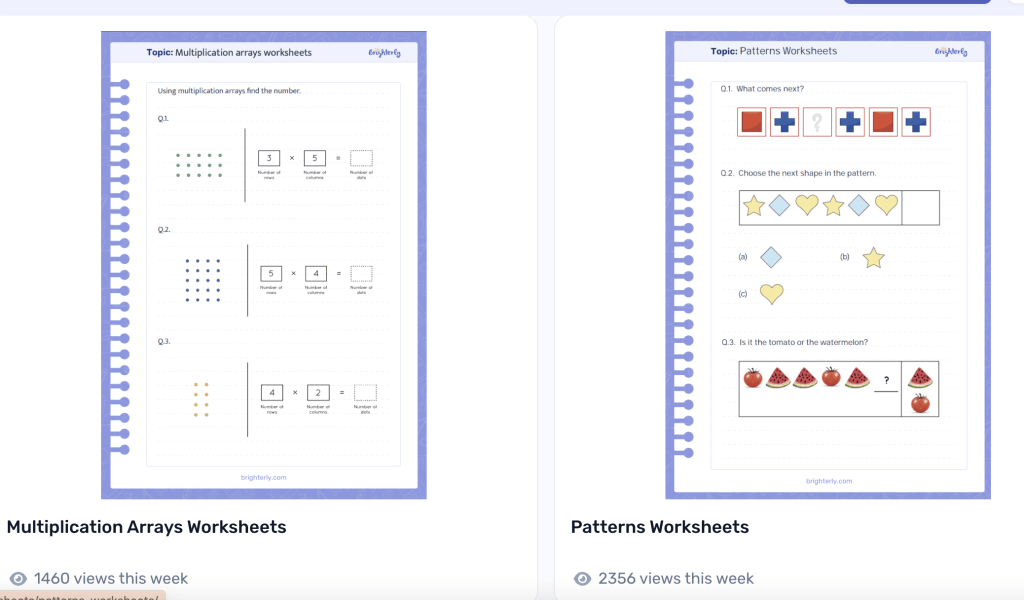
Print them and use them in your studies with a child. We have worksheets for rational and irrational numbers, business math, multiplication arrays, probability, multi-step inequalities tasks, and more!
If your child has some knowledge gaps, they can easily close them by using our Knowledge base, where we share crucial math theories and provide interactive tests related to the theme, so your child can test their knowledge. For example, here you find math tests on parallelograms.
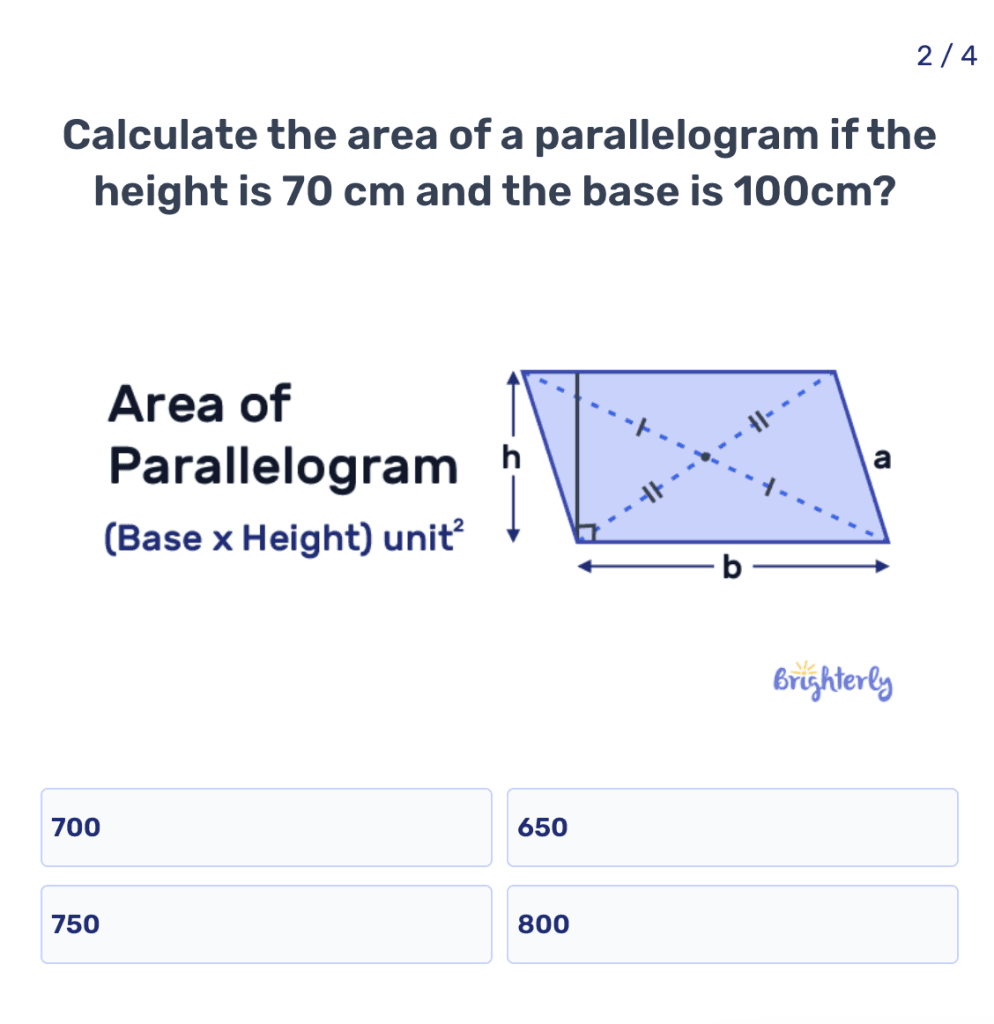
Math is easier than you may think, and Brighterly study materials can prove it to you and your child! Close knowledge gaps with our tutors and use our free tools to repeat covered material.
Conclusion
As you can see, the importance of 7th-grade math cannot be overestimated. It guarantees that schoolers get all the necessary skills and grasp those specific concepts they will use during further math studies.
Plus, the value of this knowledge is undeniable for future success in STEM fields. So, ensure your child spends enough time and has a zest for learning all that material.
And if your child needs help with the 7th-grade math material,
you can always book a lesson with Brighterly tutors!



